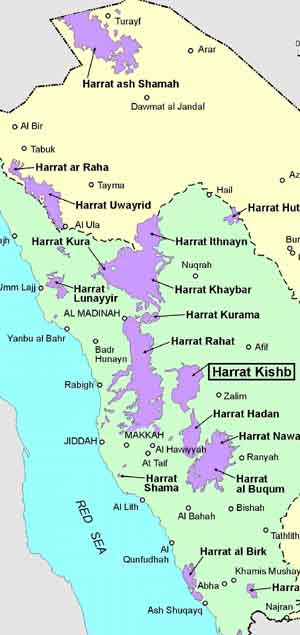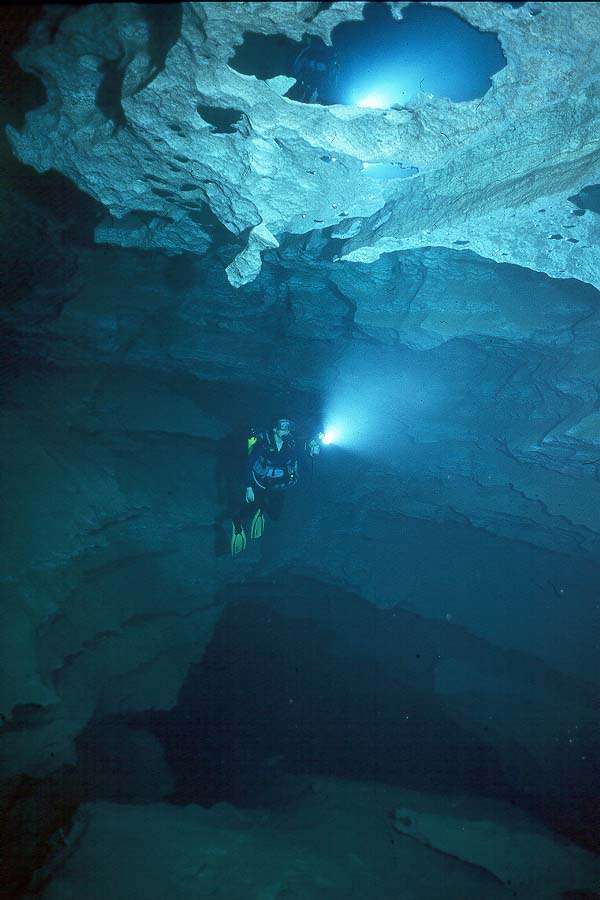Skip to comments.
Early Arabs Followed the Rain, or Didn't
Discovery News ^
| 6-25-2008
| Jennifer Viegas
Posted on 07/01/2008 4:53:28 AM PDT by blam
Early Arabs Followed the Rain, or Didn't
Jennifer Viegas, Discovery News
Living History
June 25, 2008 -- The phrase "blame it on the weather" takes new meaning in light of research suggesting that regional climate may very well have been responsible for the evolution of lifestyle, culture and even religion in the Middle East.
A new study published in the journal Antiquity marks the first time researchers have applied regional climate information to geographic variation in the Y chromosome (which only men possess).
"It is particularly exciting that climate may play a significant factor in the genetic patterns we see and, by extension, the long-standing cultural and lifestyle patterns of the Middle East," co-author Roy King, associate professor of psychiatry and behavioral sciences at Stanford University, told Discovery News.
He added that "climate, namely variations in rainfall" may have "influenced the development of the three major monotheistic religions of the Near East: Judaism, Christianity and Islam," but "to what degree" remains unknown.
What is known, based on the findings of King and his colleagues, is that before around 11,000 years ago, foraging groups gathered cereals and legumes, which grew naturally thanks to the wet winters and dry summers in the Fertile Crescent region.
Between 11,000 and 10,300 years ago, the region experienced a period of climate change, becoming colder and more arid.
The researchers took the climate data, focusing on annual precipitation, and compared it with Y chromosome information from databases that document men from Turkey, Egypt, Oman, Iraq, Jordan, Syria and the United Arab Emirates.
The scientists identified a genetic branch within the chromosome's genetic tree. Called "Haplogroup J," it, in turn, was split in two, with some individuals possessing a version called J1, others J2. The researchers found that J1 individuals were more likely to come from the drier regions and J2 men from the wetter parts of present day Turkey, Iran, the coastal Levant and Northern Iraq. The subgroups corresponded to lifestyle as well as geography: The "wet weather" group consisted of agriculturalists, descending from the world's first known farmers. The men from drier areas were pastoralists, or semi-nomadic herders, with many traditions carried on today by Arabic Bedouins.
"The fact that we observe these differences now in living populations implies that cultural barriers to migration by males between settled agriculturalist and semi-nomadic herders may have been in place for a very long time," King said.
Prior work by the same team linked Y-chromosome data to the spread of Neolithic pottery and figurines in the Near East and southeastern Europe. The spread of material culture also matched the movements of the two basic groups.
Aaron Brody, associate professor of Bible and archaeology at the Pacific School of Religion, and director of the school's Bade Museum, told Discovery News that he read the new paper "with great pleasure, as it provides fresh data and insights into early settlement of the Near East."
"Given regional differences in the archaeological assemblage of Neolithic villages, it is fascinating to discover genetic links over the broader territory reconstructed from modern DNA analysis," he said, adding that the authors of the paper have provided a "fundamental map for bio-archaeology in the region."
In the future, King and his team hope to study mitochondrial DNA, which is passed down from mothers to their daughters, in the same region. He said women might have mixed more than men did between the farming and herding groups, but that is only speculation at this point.
Since climate change may have cemented the first Middle Eastern divisions, he also suggests concern over the possible impact of modern global warming.
"One wonders about the degree to which access to water for crops, and the changing climatic patterns due to global warming, might influence present and future conflicts in the region," he said.
TOPICS: News/Current Events
KEYWORDS: arabs; archaeology; early; godsgravesglyphs; rain
Thanks to Renfield for the article.
1
posted on
07/01/2008 4:53:29 AM PDT
by
blam
To: SunkenCiv; Renfield
2
posted on
07/01/2008 4:54:04 AM PDT
by
blam
To: blam
Excellent article, very intriguing, thanks renfield and thanks blam.
Cain and Abel?
Since the books and poetry and epics in the Bible were first passed down by memorization, they were of necessity brief and concentrated. But the Cain/Abel split seems verified here.
To: blam
What does this do to my theory that the Arabs are in that God-forsaken desert because they were chased there?
;O)
4
posted on
07/01/2008 5:08:28 AM PDT
by
metesky
("Brethren, leave us go amongst them." Rev. Capt. Samuel Johnston Clayton - Ward Bond- The Searchers)
To: squarebarb
J2 you say..........
This bears more study.
5
posted on
07/01/2008 5:09:20 AM PDT
by
CletusVanDamme
("Made it Ma!!! Top of the world!!!")
To: metesky
I think the Arabs are there because, after the custom of their people, they didn't want to improve their way of life, but preferred to cut off parts of their bodies and appendages of others, to fight, plunder, and rape. A desert is a good place to retreat to after raiding the settlements of more peaceful and productive people.
I used to be a scoffer, but now that I learn that Climate Change Causes Islam, I realize that we must curtail Demon Carbon NOW. I must climb into a private jet and fly all over spreading the news to the ignorant masses.
To: blam
Ok, I'm getting a handle on the rule; Scientists may comment on religion but the religious may not comment on science. Just so we're clear.
He added that "climate, namely variations in rainfall" may have "influenced the development of the three major monotheistic religions of the Near East: Judaism, Christianity and Islam," but "to what degree" remains unknown.
7
posted on
07/01/2008 6:16:00 AM PDT
by
DManA
To: squarebarb
The Earth has been around for billions of years but the the modern HUMAN world certainly did begin 6000 years ago.
8
posted on
07/01/2008 6:19:18 AM PDT
by
DManA
To: squarebarb
"Since the books and poetry and epics in the Bible were first passed down by memorization, they were of necessity brief and concentrated. But the Cain/Abel split seems verified here."In chapter 14 of Stephen Oppenheimer's book, Eden In The East, he covers Cain & Abel tales in the people of Southeast Asia. Their Cain & Abel characters are named Manup & Kulabob.
9
posted on
07/01/2008 10:46:13 AM PDT
by
blam
To: Renfield; blam; StayAt HomeMother; Ernest_at_the_Beach; 1ofmanyfree; 21twelve; 24Karet; ...
10
posted on
07/01/2008 12:09:59 PM PDT
by
SunkenCiv
(https://secure.freerepublic.com/donate/_________________________Profile updated Friday, May 30, 2008)
To: blam
Thanks blam I will order the book, looks fascinating!
To: SunkenCiv
THE LAVA FIELDS OF SAUDI ARABIA. Between Makkah and Madinah is the 20,000km2 Harrat Rahat lava-field with 644 scoria cones, 36 shield volcanoes and 24 domes. Between Madinah and the Great Nafud are the coalesced harrats Khaybar, Ithnayn and Kura with an area of 20,560km2 and 327 scoria cones, 46 basaltic shield volcanoes, 20 domes, 5 tuff cones, one basaltic stratovolcano (Jebel Qidr which looks like Mt. Fuji in Japan) and 39 massive and very long lava flows that we have named “whaleback flows” from their unusual appearance in the field. These the biggest and longest basalt flows in western Saudi Arabia and of course contain the biggest and most extensive lava-tubes.

PHOTO GALLERY.

Salt lake in two-km-wide Wahbah Crater.

WHAT'S NEW ON SAUDI CAVES.


The white silt layer gave the floor soft, rounded contours, whereas the walls and roof had shelves with sharp edges. When I looked into a small hole in the wall it was filled with the most beautiful small crystals, like an ice cave.
12
posted on
07/01/2008 5:32:15 PM PDT
by
Fred Nerks
(FAIR DINKUM!)
To: Fred Nerks
Thanks! Great photos, as always.
13
posted on
07/01/2008 10:43:50 PM PDT
by
SunkenCiv
(https://secure.freerepublic.com/donate/_________________________Profile updated Friday, May 30, 2008)
Disclaimer:
Opinions posted on Free Republic are those of the individual
posters and do not necessarily represent the opinion of Free Republic or its
management. All materials posted herein are protected by copyright law and the
exemption for fair use of copyrighted works.
FreeRepublic.com is powered by software copyright 2000-2008 John Robinson




